Eamon Ore-Giron: Surfing the 'Latin American Cultural Reverb'
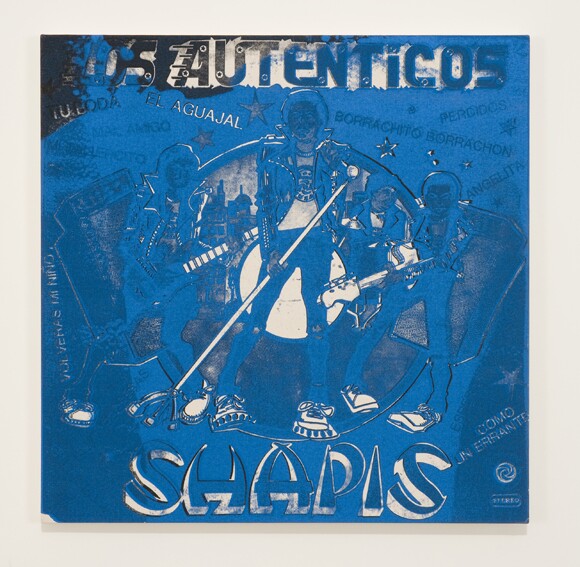
In partnership with 18th Street Arts Center 18th Street Arts Center is an artists' residency program that provokes public dialogue through contemporary art-making.
"Since the times of the Spanish Conquest, death and sadness have been common themes in this region, and nothing reflects this more than the melancholic rhythm of la guitarra Ayacuchana, a guitar style so unique that it is rarely heard in other parts of Peru, much less outside of the country."
So states DJ Lengua in the blog Super Sonido, a website whose posts focus on "The Latin American Cultural Reverb" that we feel here in the United States. Cumbia, Latin funk and Soul, boleros/baladas and garage rock en Español are all categories covered on this corner of the Internet. It is through this entry point of popular Latin American musical genres filtered through California cool that DJ Lengua, also known as L.A.-based contemporary artist Eamon Ore-Giron, transports us into an ebb and flow of poignant convergences between folk and formal genres of music and art in the Americas.

As part of 18th Street Arts Center's Artist Labs program, Ore-Giron presents a dynamic installation of new work incorporating sculpture, video, painting, music and live performances through December. The exhibition's title E-D-G-B-D-G, refers back to la guitarra Ayacuchana, specifically the genre's alternate guitar tuning scale which is a sound profile unique to the Central Andes. Ore-Giron likens this hybrid indigenous and Spanish musical scale with the merger of folk, pop, historical and conceptual references throughout his interdisciplinary artworks. A complex interplay between themes of tourism, revolution, design, and public sculpture reverberate within the works, while formal questions regarding the relationship between functional sculpture and introspective form are explored.
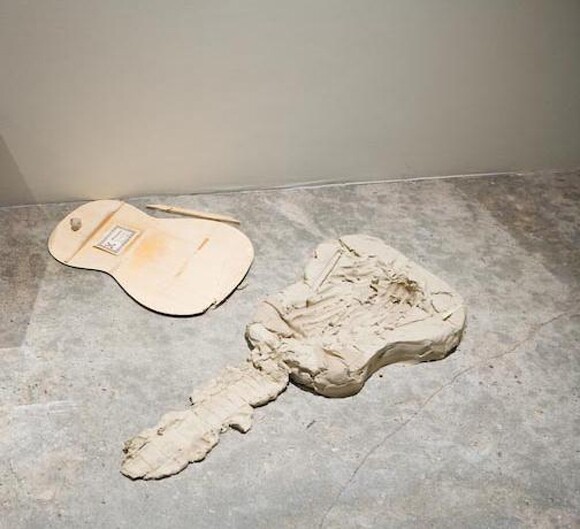
Ore-Giron began developing this body of work after learning that China recently purchased the Andean mining town of Morococha, Peru with plans to relocate the entire municipality in order to extract the copper reserves underneath it. Having traveled numerous time in his life through this town to visit family in Peru, the artist recalled his own experiences there through found-images of the city in an online travel blog and began to marry these candid photographs with his interest in Latin American modernist and public sculpture. Ore-Giron says, "These photos were very interesting because they portrayed a person that was anonymously concealed in an astronaut-like motorcycle outfit posing in front of various public sculptures representing the local struggle for justice and celebrations of their labor and mining history."
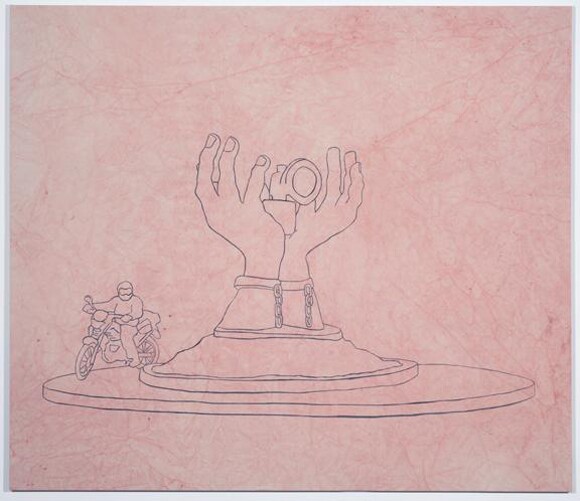
The resulting artworks are linked to personal memories as well as ideas of labor and resistance, and represent an investigation into sculptural and musical forms inspired by classical, modernist and folk art genres. The image of the guitar plays a central role in the exhibition, drawing upon art historical and cultural references in the works of Picasso, Braque, Gris and the Spanish poet Garcia Lorca, all of whom elevated folk forms of music and art such as Flamenco into Classical status through abstraction.
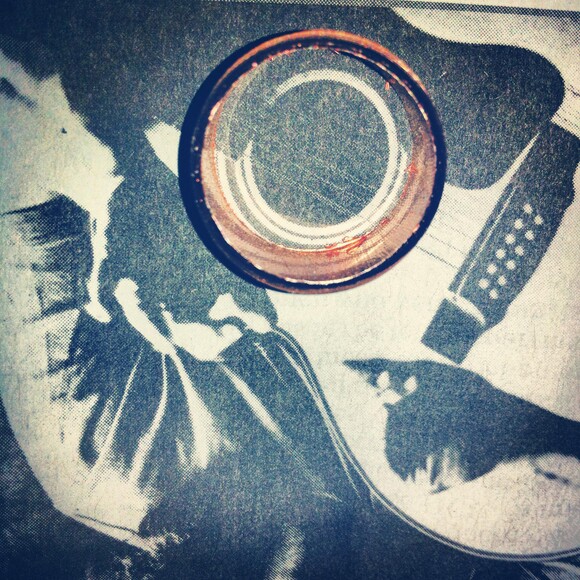
While Andean Peruvian music is frequently associated with wind instruments like the pan-flute, the guitar is also prominently featured and directly reflects the encounter between indigenous and Western styles intermingling over the centuries. Spanish conquistadors brought the vihuela (mandolin) with them, eventually evolving in theregion into the charagno, a distinctly Andean stringed instrument traditionally made with a dried armadillo shell as its back. This miscegenation in the guitar family and the intrinsic sounds they begat, roughly correlates to the intermingling of artistic genres in Latin America as well. In Peru, the Quechua and mestizos of the Cuzco School in the colonial period adapted European styles of religious painting in the 16th and 17th centuries to reflect the native peoples and landscapes. Later under Modernism, Western European principles converged with the South American terrain to spawn new visual art and architecture throughout the region. Nationalistic expressions of modernist styles reflect a cannibalization of European aesthetics into native forms, often incorporating political ideologies. In public art and sculpture, stylistic constraints of content and form fade away as heroic figures may pay homage side by side to foregone monarchy or to the proletariat, while revolutionary themes might meet abstraction. Throughout, folk resurgences present themselves at random, creating strange and unexpected tensions.

Any and all of these influences create a launching pad for Ore-Giron's interests. High and low art forms intersect and unfold in his current body of work, as do the artist's own memories of place and family history. Utilizing the reference imagery from the online travelogue, Ore-Giron pursues his own mental and emotional responses to the auditory and visual constructions embedded in his own nostalgic recollection. Herein, Ore-Giron pursues a role as both a native and a tourist with the source material, accounting for his roots in this particular place and his present distance from it.
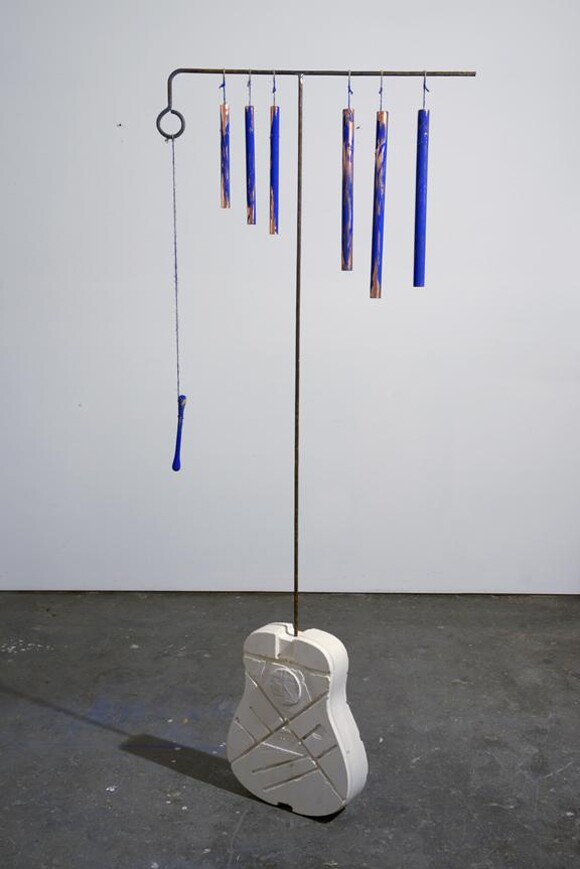
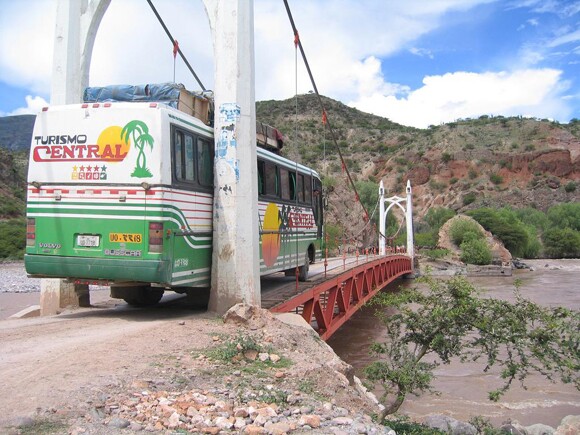
Throughout the course of this exhibition, Ore-Giron presents an intermittent series of musical performances that activate and interact with his sculptures, furthering the artist's continued interest in mash-ups of music and contemporary art. Performing with collaborators Chris Avitabile and Joshua Aster as the newly formed guitar trio Voluminous Sparks, Ore-Giron not only plays on the idea of the Latin American trio and the figure of the troubadour, but also employs his own take on the the titular Andean guitar tuning scale as a basis for his musical arrangements. The regional Peruvian guitar styles he riffs on, including Ayachuchana and Yaraví, may be likened to the open tuning typical of American blues in that its specific guitar chords evoke a sense of loss and pain. Again, thematics of cubism seems near as Picasso's guitar constructions come to mind.
Just as the cubist explorations by Diego Rivera became infused with folk references once he returned to Latin America from Europe, Ore-Giron hones in on the fused schools of art and music in the Americas that have evolved into nuanced, reconsidered styles. As DJ Lengua, Ore-Giron regularly features Spanish-language versions of American classics that have been co-opted or overlaid on local beats. For example, in his sessions with Los Angeles-based Internet radio station dublab, he samples covers of American 1960s rock songs such as "I Think We're Alone Now" transfigured into "Ahora Estoy Solo" by Mexican group Los Hitters. With the DJ collective Mas Exitos, Ore-Giron champions groups like Los Shapis, a band that became Peru's first domestically-grown big seller epitomizing a new sound called Chicha. This genre, which came into popularity in the 1980s, owes its name to the traditional fermented beverage derived from maize in Central and South America and culturally represents the historic shift from rural life to urban existence through its use of modern instrumentation paired with traditional Andean musical forms such as Huayno.
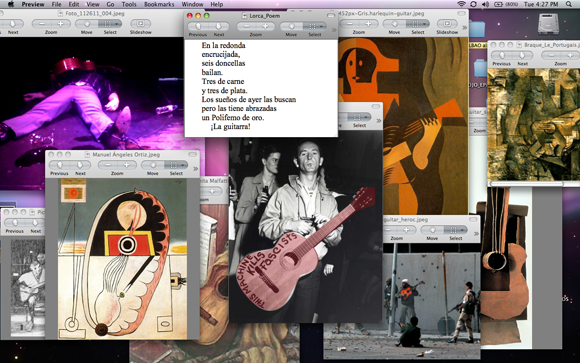
Since his days collaborating with artist Julio Cesar Morales in San Francisco on the music/art hybrid project cum-record label Club Unicornio, Ore-Giron has funneled his enthusiasm for folk and pop mixes through multiple platforms. Through a readership and listenership online, he has contributed to the popularity of weaving distinctly Latin sounds, such as Mexican and South American cumbia, into contemporary electronic music in the DJ set. Like Los Shapis who found affinity with American rock and roll groups such as the Ramones, Ore-Giron's work reflects an intuitive overlay of folk origins into the contemporary experience. His current project at 18th Street Arts Center included, Ore-Giron's work elevates common and popular genres of art and music into cutting edge cultural contexts.
Dig this story? Sign up for our newsletter to get unique arts & culture stories and videos from across Southern California in your inbox. Also, follow Artbound on Facebook and Twitter.